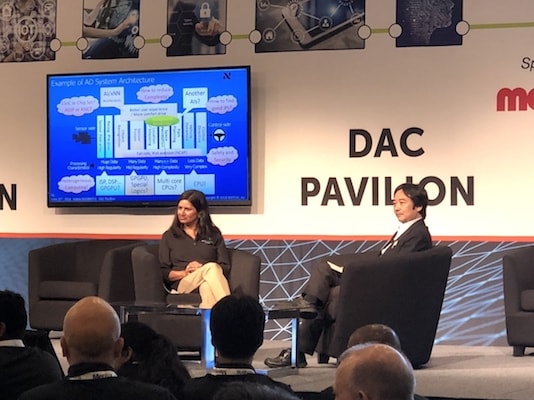DAC is where both sides of the design equation come together for discussion and learning. This is what makes attending DAC discussion panels so interesting; you are going to hear from providers of tools, methodologies and IP as well as those who need to use them to deliver working solutions. There are few places where the interplay between design activity and the tools necessary to accomplish it are more important than in the rapidly changing area of automotive electronics. For decades cars basically had coils and capacitors. Then came radios. But in just the last few years the complexity of automotive electronics has leapt to the upper end of the spectrum.

As usual power efficiency and performance are essential, however, in addition, safety has become a top line requirement. So, it was interesting to see the “fireside chat” hosted at DAC by Netspeed on the topic of “Design for Safety and Reliability – ADAS and Autonomous Vehicle SoCs”. Netspeed CEO Sundari Mitra interviewed Hideki Sugimoto from NSITEXE, the Japan based supplier of SOC IP for automotive autonomous driving systems.
Sundari started the session off by pointing out that the rapid growth in automotive semiconductors is fueled largely by the development of ADAS and autonomous driving systems. She asked what are the major trends and what are the needs and challenges that are created by them. Sugimoto replied that he has seen three major trends.
The top OEMs and Tier One vendors have very specific performance, safety and power goals. It used to be that ASSPs worked well enough, but off the shelf parts, even when tailored for specific markets, are not good enough anymore. So now all the players are involved in some way with ASIC development.
Now, within ASIC design, there has been a need for a shift from hand tuning each part of a chip to achieve performance goals. This was fine when the SOCs has fewer blocks, but now the better way to meet requirements is to start at the top level and map out requirements thoroughly. The requirements need to be specified in terms of end use-case performance or power goals.
The last trend is the move towards heterogeneous computing. The SOCs needed for ADAS or autonomous vehicles are extremely complex and their performance cannot be improved just by adding more CPUs or GPUs. The right way to carefully match up the right mix of the above and also add special purpose processors and accelerators for things like machine learning. Sugimoto’s company NSITEXE has a strong track record in this area, so these observations are borne out of direct experience.
Sundari followed with a question on the specifics of a requirements driven approach to putting chips together. Sugimoto cited the need to really look at the system level and not just focus on the chip itself at the outset.
The main performance factors are throughput, latency and end to end QoS. At the same time, all of this needs to be done without compromising safety. Sugimoto pointed out that you can’t bolt on the safety elements later and you also cannot achieve your performance goals without considering the safety requirements early in the process.
Sugimoto feels that there are three must have capabilities in an architectural design solution for automotive chips. They are (a) handling heterogeneous compute elements and coherency (b) delivering high QoS across all types of workloads and (c) ASIL-D and ISO 26262 certification. Every one of these affects safety security and reliability. The maximum amount of data must be extracted from the sensors. This means higher bandwidth and more processing. Sugimoto emphasized heterogeneous computing is really the only solution. However, this makes the chip architecture more complex. Sugimoto sees Network on Chip as a critical tool for managing this complexity and still being able to achieve design goals. NoCs can help provide determinism in these systems through the addition of memory coherency and QoS, for instance. Naturally the NoC will also have to comply with ISO 26262.
Looking at the conversation it is clear that automotive is now the killer app for advanced SOC design tools. This is where the greatest challenges are. The combination of the unique environmental, power, safety and functional factors make this a very interesting prospect. I have been covering Netspeed for some time now and can see how they are looking at the automotive market as a space where their NoC technology can make a big difference. Their website has more information on designing SOCs for automotive applications. It’s worth taking a look.
Share this post via:





The Quantum Threat: Why Industrial Control Systems Must Be Ready and How PQShield Is Leading the Defense